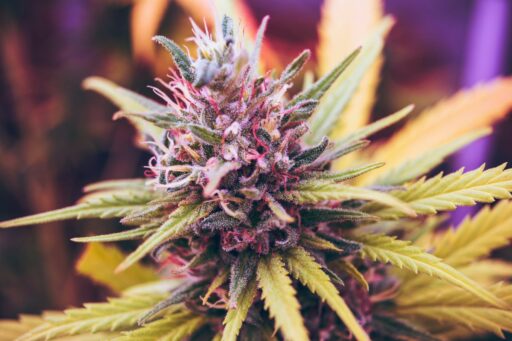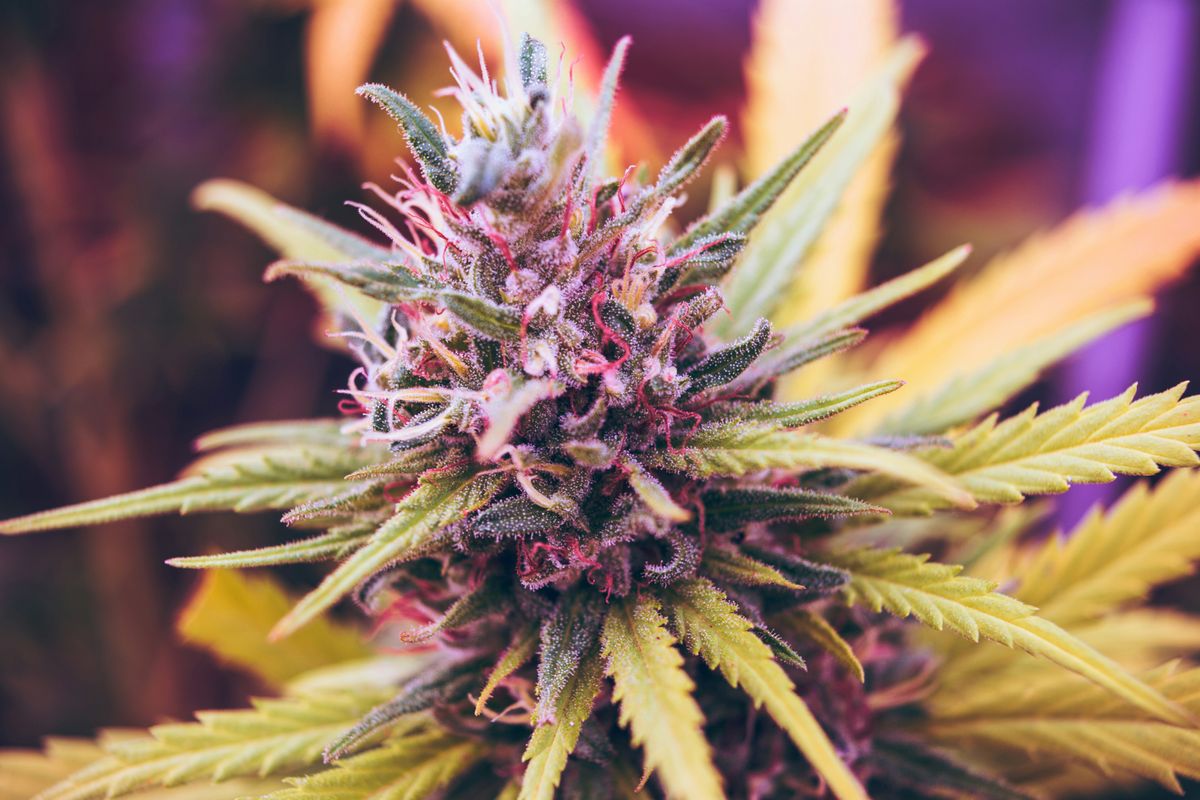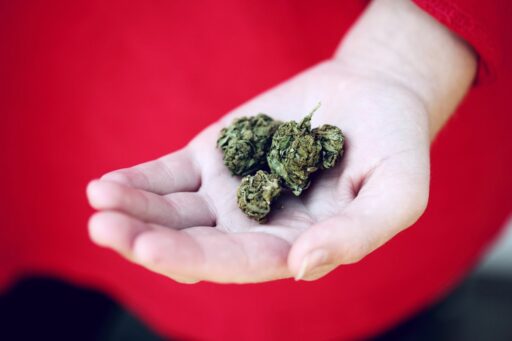The legalization of marijuana marks a significant shift in policy, with ramifications that permeate various facets of society. As states and nations navigate the changing landscape, it’s essential to understand the comprehensive impacts of this movement. This article delves into the economic, social, health, safety, cultural, and regulatory dimensions, offering a thorough analysis of marijuana’s legalization and its far-reaching consequences.
Key Takeaways
- Legalization of marijuana has led to increased revenue through taxation, job creation, and industry growth, significantly impacting the economy.
- Shifts in law enforcement priorities and criminal justice reform have emerged, promoting social equity and addressing past injustices related to marijuana offenses.
- Public health outcomes, youth access, and the therapeutic benefits of cannabis are at the forefront of health and safety discussions post-legalization.
- Cannabis legalization has influenced consumer behavior, leading to normalization, changes in preferences, and innovative consumption methods.
- Regulatory challenges persist, particularly with federal vs. state legal discrepancies, requiring effective frameworks for industry governance.
Economic and Social Implications of Marijuana Legalization

Revenue Generation and Taxation
The legalization of marijuana has ushered in a new source of revenue for states that have embraced it. Well-designed cannabis taxes can generate significant income with minimal societal impact, contrasting sharply with the consequences of poorly structured taxation. For instance, a comprehensive cannabis tax policy blueprint suggests that nationwide legalization could potentially yield up to $8.5 billion annually for all states combined.
The economic benefits of marijuana legalization are not limited to tax revenue alone. They extend to savings in law enforcement and judicial resources, previously tied up in prosecuting marijuana-related offenses.
States have adopted various models for marijuana taxation, often including a combination of sales, excise, and cultivation taxes. The specific tax rates and structures can vary widely, reflecting local economic conditions and policy objectives.
Job Creation and Industry Growth
The legalization of marijuana has catalyzed a burgeoning industry, leading to significant job creation and industry growth. As new businesses emerge across the cannabis supply chain—from cultivation to retail—employment opportunities have expanded in both direct and ancillary services. This growth is not limited to plant-touching roles but extends to a wide array of professional services supporting the industry.
- Cultivation centers
- Dispensaries
- Manufacturing facilities
- Distribution networks
- Ancillary businesses (e.g., legal, marketing, financial services)
The ripple effect of this expansion is evident in the increasing demand for skilled labor, specialized training programs, and educational initiatives aimed at equipping the workforce with the necessary expertise to thrive in this sector. Moreover, the industry’s growth has prompted the development of innovative business models and partnerships, further solidifying cannabis as a legitimate and lucrative segment of the economy.
The economic vitality of the cannabis industry is a testament to the transformative power of legalization, with job creation serving as a cornerstone for broader economic development.
Shifts in Law Enforcement Priorities
With the legalization of marijuana, law enforcement agencies are experiencing a paradigm shift in their priorities. The focus is now shifting from criminalization to regulation and safety. This realignment has led to a redistribution of resources, with a significant reduction in arrests for possession and an increase in efforts to combat illegal distribution.
- Reduction in arrests for possession: A clear trend in states with legalized marijuana is the decrease in arrests for simple possession, freeing up law enforcement resources.
- Combatting illegal distribution: Agencies are redirecting efforts to tackle the black market and ensure compliance with state regulations.
- Public safety and education: There’s a growing emphasis on public safety campaigns and education regarding responsible consumption.
The reallocation of resources is not only fiscally responsible but also allows for a more targeted approach to public safety concerns.
Recent data indicates a nuanced impact of policy changes on cannabis-related calls to poison centers. For instance, while some districts report a decline in THC and Delta-8 exposures, others note localized increases. This suggests that the effects of legalization are complex and require ongoing analysis to fully understand the implications for law enforcement and public health.
Social Equity and Criminal Justice Reform
The legalization of marijuana has opened the door to significant reforms in social equity and criminal justice. States are actively working to remove the threat of jail time for simple possession, often replacing it with a civil fine—a policy known as decriminalization. This shift not only alleviates the burden on the criminal justice system but also aims to correct the disproportionate impact of drug laws on marginalized communities.
The expungement of past marijuana convictions is a critical component of these reforms, allowing individuals to move forward without the stigma of a criminal record.
Current legislative efforts reflect a growing consensus on the need for change. For instance, Georgia’s SB42 proposes the removal of criminal penalties for possession under an ounce of cannabis, suggesting a maximum fine of $200 and facilitating the expungement process. Similarly, Florida’s S0094 aims to replace criminal penalties with a civil fine for possession of 20 grams or less, even for repeated offenses.
The table below summarizes recent legislative actions aimed at decriminalization:
| State | Bill | Possession Limit | Penalty Replacement |
|---|---|---|---|
| Georgia | SB42 | < 1 oz | Civil fine up to $200 |
| Florida | S0094 | ≤ 20 grams | Civil fine |
These measures are a testament to the evolving attitudes towards cannabis and a recognition of the need for a more equitable legal framework.
Health and Safety Perspectives on Cannabis Legalization

Public Health Outcomes
The legalization of marijuana has brought about significant changes in public health outcomes. The shift in policy has necessitated a reevaluation of health education and safety protocols to address new challenges and opportunities. For instance, the introduction of age verification on websites providing marijuana news and related content is a direct response to concerns about youth access.
Edible cannabis exposures have shown varied trends across different regions. While some districts report declines, others, particularly the Virginia Poison Center (VPC) and the Blue Ridge District (BRD), have seen increases in pediatric THC exposures, indicating a need for targeted public health interventions in these areas.
The nuanced impact of legalization on public health outcomes underscores the importance of continuous monitoring and adaptive strategies to mitigate potential risks while maximizing the therapeutic benefits of cannabis.
The table below summarizes the changes in edible cannabis exposures and pediatric THC exposures in Virginia:
| Year | Total Edible Exposures | Pediatric THC Exposures |
|---|---|---|
| 2022 | – | – |
| 2023 | 96 fewer | 9 more |
Impact on Youth Access and Use
The legalization of marijuana has raised significant concerns regarding its impact on youth access and use. A notable trend is the fluctuation in pediatric THC exposures, with data indicating variations across different regions and age groups. For instance, while overall edible cannabis exposures declined in the state, certain districts experienced an increase, particularly the VPC and the BRD.
Despite overall decreases in pediatric THC exposures, the numbers remain substantial, with more than 500 cases reported in Virginia alone. This suggests that while awareness may be improving, the risk to young children persists.
Experts emphasize the importance of considering underreporting in such data, as fear or lack of awareness may deter potential reports. The table below illustrates the changes in pediatric edible exposures for ages 0 to 5:
| District | 2022 Exposures | 2023 Exposures | Change |
|---|---|---|---|
| NCPC | High | Drastically Low | Decrease |
| VPC | Moderate | Increased | Increase |
| BRD | Moderate | Increased | Increase |
The data underscores the need for continued vigilance and education to mitigate the risks associated with youth access to cannabis products.
Cannabis as Medicine: Therapeutic Benefits
The recognition of cannabis as a therapeutic agent has led to significant advancements in its medical application. Patients with medical marijuana cards gain access to a wider variety of high-quality cannabis products, often with greater potency tailored to specific medical conditions.
Cost savings are another critical aspect, as medical marijuana is frequently less expensive than its recreational counterpart due to tax exemptions. This financial benefit is particularly important for patients requiring long-term cannabis-based treatments.
The therapeutic landscape of cannabis is evolving, with medical marijuana cards playing a pivotal role in enhancing patient access and treatment efficacy.
Medical marijuana cards also lower the age limit for access compared to recreational use, providing younger patients with the necessary treatments for their conditions. The guidance of healthcare practitioners ensures that patients maximize the therapeutic benefits of medicinal cannabis.
Here is a summary of the key benefits of having a medical marijuana card:
- Enhanced legal protection
- Access to high-potency cannabis products
- Cost savings and tax exemptions
- Higher possession limits
- Lower age limits for medical use
- Tailored medical guidance
Regulation of Cannabis Products and Consumer Safety
The safety and quality of cannabis products have become a central concern as legalization spreads. Regulatory bodies are tasked with ensuring that products meet stringent safety standards to protect consumers. In the United States, the FDA plays a pivotal role in this process, particularly for cannabis-derived products that are intended for medical use.
The FDA’s evaluation of hemp seed-derived food ingredients in December 2018 marked a significant step towards establishing a regulatory framework for cannabis products. This evaluation included three hemp seed-derived food ingredients that were recognized as safe (GRAS). Here’s a brief overview of the FDA’s findings:
| Ingredient | Status |
|---|---|
| Hulled Hemp Seed | GRAS |
| Hemp Seed Protein Powder | GRAS |
| Hemp Seed Oil | GRAS |
While these developments are promising, the lack of uniformity in regulations across states poses challenges. For instance, Virginia’s unregulated cannabis-derived products highlight the need for more robust policies to ensure public safety. The state’s poison center districts are monitoring cannabis exposure, indicating a proactive approach to consumer safety.
The distinction between medical and recreational cannabis products is crucial, with medical marijuana (MMJ) often offering greater potency and undergoing more rigorous safety checks. Licensed dispensaries and regulatory agencies ensure the purity and efficacy of these products, providing a safer option for consumers.
As the industry evolves, the importance of consumer protection remains paramount. Ensuring the safety of cannabis products not only benefits public health but also bolsters consumer confidence, which is essential for the sustained growth of the cannabis market.
Legalization’s Influence on Cannabis Culture and Consumer Behavior

Normalization of Cannabis Use
The legalization of marijuana has ushered in a significant cultural shift, leading to the normalization of cannabis use in society. This change is evident in the way cannabis is perceived and consumed across different demographics. The stigma that once surrounded marijuana use is dissipating, as it becomes more integrated into mainstream culture.
- Public acceptance of cannabis has grown, with many viewing it as comparable to alcohol or tobacco.
- Cannabis-related products and businesses are becoming more visible and diverse.
- Educational efforts and public awareness campaigns have contributed to a more informed public.
The impact of recreational cannabinoid legalization on utilization could also reflect changes in societal attitudes. For instance, the observed decrease in THC use after legalization might indicate a shift in consumption patterns or reporting behaviors due to decreased stigma or other factors such as Pandemic stressors.
The evolving landscape of cannabis use is not only reshaping social norms but also influencing legal frameworks, market dynamics, and public health strategies.
Changes in Consumer Preferences
The legalization of marijuana has led to a dynamic shift in consumer preferences, with a notable trend towards the use of edibles and Delta-8 products. The market has seen a fluctuation in the incidents of edible cannabis exposures, indicating a changing landscape of consumption habits.
While overall edible exposures decreased in 2023, certain areas experienced an increase, reflecting regional variations in consumer behavior.
Delta-8 products, which are argued to have medical benefits and serve as a safe alternative to marijuana, have also seen a significant shift in reported exposures. After a sharp increase between 2020 and 2022, there was a more than 50% drop in 2023. This suggests a growing awareness and possibly more cautious approach to these products.
Here is a summary of the changes in exposure reports:
| Year | Total Edible Exposures | Pediatric THC Exposures | Delta-8 Exposures |
|---|---|---|---|
| 2022 | Increase | Increase | 181 |
| 2023 | Decrease | Decrease | 81 |
These trends highlight the evolving nature of cannabis consumption as legalization continues to shape user preferences and safety considerations.
Cannabis Tourism and Its Economic Effects
The legalization of marijuana has given rise to a new niche within the tourism industry. From cannabis tours to cannabis cooking classes, this burgeoning sector is not only diversifying tourism offerings but also contributing to economic growth in regions where cannabis is legal. The influx of tourists seeking cannabis experiences has led to increased spending in local businesses, ranging from hospitality to retail.
Cannabis tourism has also prompted the development of specialized services and events, further stimulating local economies. Here are some of the economic benefits observed:
- Increased revenue from tourism-related taxes
- Job creation in sectors such as travel, hospitality, and event management
- Growth in ancillary businesses that support the cannabis tourism industry
The economic impact of cannabis tourism extends beyond direct sales of marijuana products. It encompasses a wide array of services and experiences that cater to tourists, which in turn supports small businesses and contributes to the vibrancy of local communities.
Innovation in Cannabis Products and Consumption Methods
The legalization of marijuana has sparked a wave of innovation in cannabis products and consumption methods, catering to a diverse range of preferences and needs. As the market matures, consumers are witnessing an expansion in the variety of products available, from traditional flower to sophisticated concentrates and edibles.
- Traditional Flower
- Concentrates (Shatter, Wax, Oil)
- Edibles (Gummies, Chocolates)
- Topicals (Creams, Balms)
- Tinctures
- Innovative Delivery Systems (Vaporizers, Dab Rigs)
This proliferation has not only enhanced the consumer experience but also introduced complexities in regulation and safety standards. > The THC levels in medical and recreational cannabis products differ significantly, with medical marijuana (MMJ) offering greater potency and more effective relief for various conditions. Licensed dispensaries and regulatory agencies closely monitor these factors to ensure safety and efficacy.
As the industry evolves, so does the need for comprehensive information resources. A notable example is the Marijuana News website, which provides archives from February 2024, uncategorized categories, recent posts, and comments, serving as a vital tool for both consumers and professionals to stay informed.
Regulatory Challenges and Solutions in the Cannabis Industry

Navigating Federal vs. State Legal Discrepancies
The landscape of cannabis legality in the United States is a complex patchwork of state statutes and federal regulations. Navigating this terrain requires a nuanced understanding of the interplay between state sovereignty and federal oversight. While some states have embraced legalization, others maintain strict prohibitions, and the federal government continues to classify marijuana as a Schedule I controlled substance.
The dichotomy between state-level legalization and federal prohibition creates a challenging environment for businesses and consumers alike. It is a legal limbo where state-compliant cannabis activities can still be subject to federal enforcement actions.
Understanding the legal status of cannabis across various jurisdictions is crucial for anyone looking to engage with the industry. Below is a list of key considerations when dealing with federal vs. state legal discrepancies:
- The importance of staying informed on the latest legislative developments.
- Recognizing the risks associated with interstate commerce of cannabis products.
- The potential for federal reform and its implications for state-level regulations.
- Strategies for businesses to remain compliant with both state and federal laws.
Establishing Effective Regulatory Frameworks
The establishment of effective regulatory frameworks is crucial for the burgeoning cannabis industry. These frameworks serve as the foundation for ensuring product safety, consumer protection, and market stability. Without them, the risks of unregulated products and inconsistent quality standards can undermine public trust and the industry’s legitimacy.
In Virginia, the push for tighter enforcement of cannabis-derived products highlights the need for clear policies. The state’s efforts to reduce unregulated products, especially after the increase in pediatric exposures, underscore the importance of regulation in protecting public health.
Establishing comprehensive and transparent regulatory frameworks enables the development of a safe and well-regulated cannabis industry, fostering consumer confidence and industry growth.
Key components of a regulatory framework might include licensing requirements, product testing and labeling standards, and compliance monitoring. These elements work together to create a structured environment where businesses can thrive while prioritizing consumer safety.
Banking and Financial Services for Cannabis Businesses
The cannabis industry faces unique challenges in accessing banking and financial services due to the federal illegality of marijuana. Despite state-level legalization, cannabis businesses often struggle to secure basic banking services, which hampers their ability to operate efficiently and grow.
- Traditional banking services are limited, leading to a reliance on cash transactions.
- The lack of banking access increases security risks and complicates tax collection.
- Some financial institutions are beginning to offer services, but with stringent requirements.
The need for secure and compliant financial solutions is critical for the sustainability and advancement of the cannabis industry. Innovative financial products and services tailored to the cannabis sector are slowly emerging, addressing the gap left by conventional banks.
Legislative efforts are underway to bridge the divide between state and federal laws, aiming to provide a clearer path for financial institutions to serve cannabis-related businesses. The success of these initiatives is pivotal for the future of cannabis commerce.
Intellectual Property and Trademark Issues in Cannabis
As the cannabis industry matures, intellectual property (IP) rights have become a pivotal area of concern for businesses. The complexities of navigating IP laws are amplified by the varying legal status of cannabis at the state and federal levels. Patents and trademarks are two vital pieces of intellectual property, and their application in the marijuana industry is still being explored as more states pass legalization measures.
The establishment of trademarks for cannabis products is particularly challenging. Trademarks are essential for brand recognition and consumer trust, but federal restrictions often prevent cannabis-related trademarks from being registered.
To address these challenges, some businesses have turned to state-level trademark registrations or alternative branding strategies. Below is a list of common IP issues faced by cannabis businesses:
- Protecting proprietary strains and cultivation methods
- Securing patents for unique cannabis-related inventions
- Navigating the complexities of trademark registration
- Ensuring compliance with both state and federal IP laws
- Dealing with potential IP litigation from competitors
Conclusion
As we stand at the threshold of a transformed landscape, the legalization of marijuana has ushered in a new era with far-reaching implications. The data and developments across states like Virginia, alongside the legislative momentum in over thirty states, underscore a societal shift towards acceptance and regulation. Economic, legal, and medical dimensions have all been reshaped by this green wave, with decriminalization efforts reducing the burden on the judicial system and the emergence of medical cannabis programs offering therapeutic prospects. However, the journey is far from over. The need for a regulated market to ensure safety and the ongoing debates in states yet to legalize indicate that the path forward is complex and requires careful navigation. As we continue to witness the evolution of cannabis policy, it is imperative that we balance the benefits with vigilant oversight to mitigate potential risks and ensure that the progress made serves the well-being of all citizens.
Frequently Asked Questions
What are the economic benefits of legalizing marijuana?
Legalizing marijuana has led to increased revenue generation through taxation, job creation, and industry growth. States that have legalized cannabis have seen significant contributions to their budgets from cannabis taxes, and the industry has created a variety of new jobs ranging from cultivation to retail sales.
How has marijuana legalization impacted law enforcement and criminal justice?
Legalization has shifted law enforcement priorities by reducing the number of arrests for possession, thereby allowing police to focus on more serious crimes. It has also led to criminal justice reform, including the expungement of past marijuana convictions, contributing to social equity.
Can marijuana legalization affect public health and youth access?
While legalization includes regulations to prevent youth access, there is ongoing research into its effects on public health. States have implemented measures to ensure that cannabis products are safely produced and sold, and there are educational campaigns aimed at preventing underage use.
What therapeutic benefits does medical cannabis provide?
Medical cannabis is used to treat a range of conditions including chronic pain, epilepsy, multiple sclerosis, and chemotherapy-induced nausea. Ongoing research continues to explore its potential in treating other medical conditions.
How does cannabis legalization influence consumer behavior and culture?
Legalization has normalized cannabis use, leading to changes in consumer preferences and behaviors. It has spurred the development of cannabis tourism and prompted innovation in cannabis products and consumption methods.
What are the regulatory challenges faced by the cannabis industry?
The cannabis industry navigates complex regulatory challenges, including discrepancies between federal and state laws, establishing effective regulatory frameworks, banking restrictions, and intellectual property issues. These challenges require comprehensive solutions to ensure the industry’s sustainable growth.





